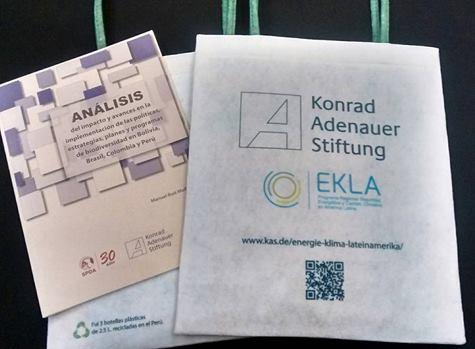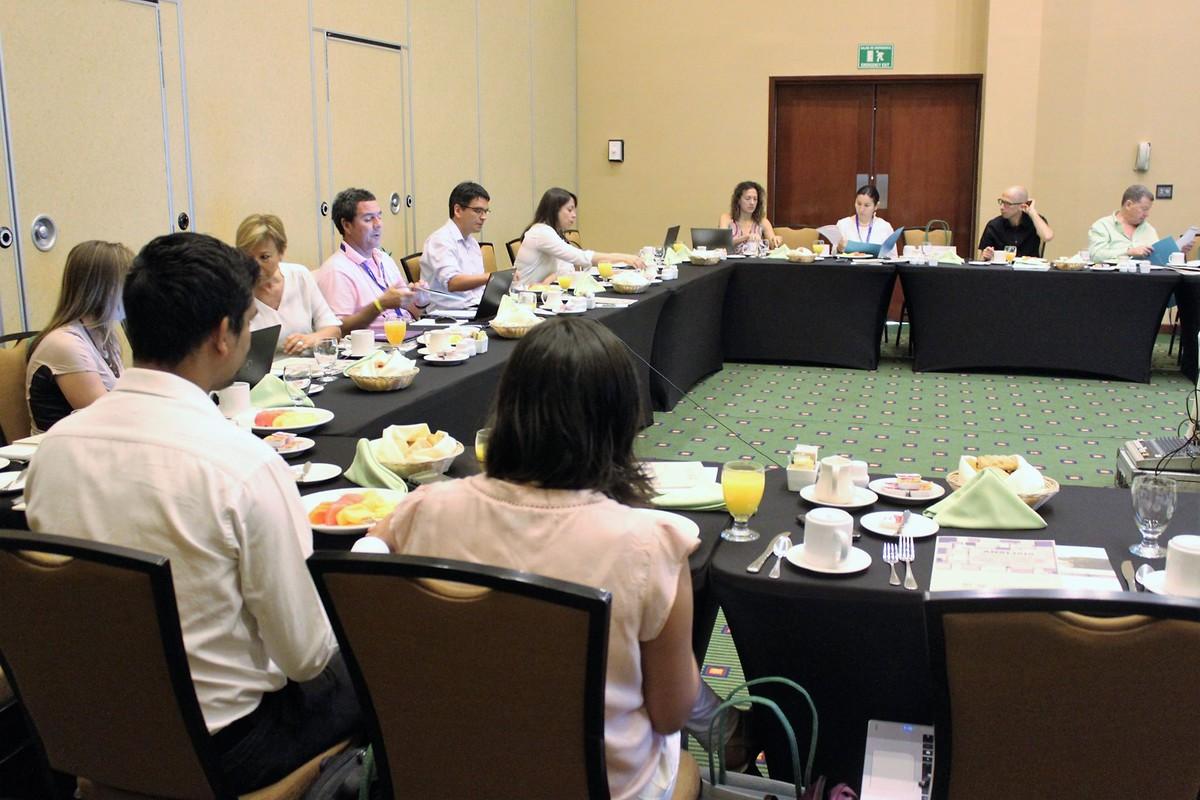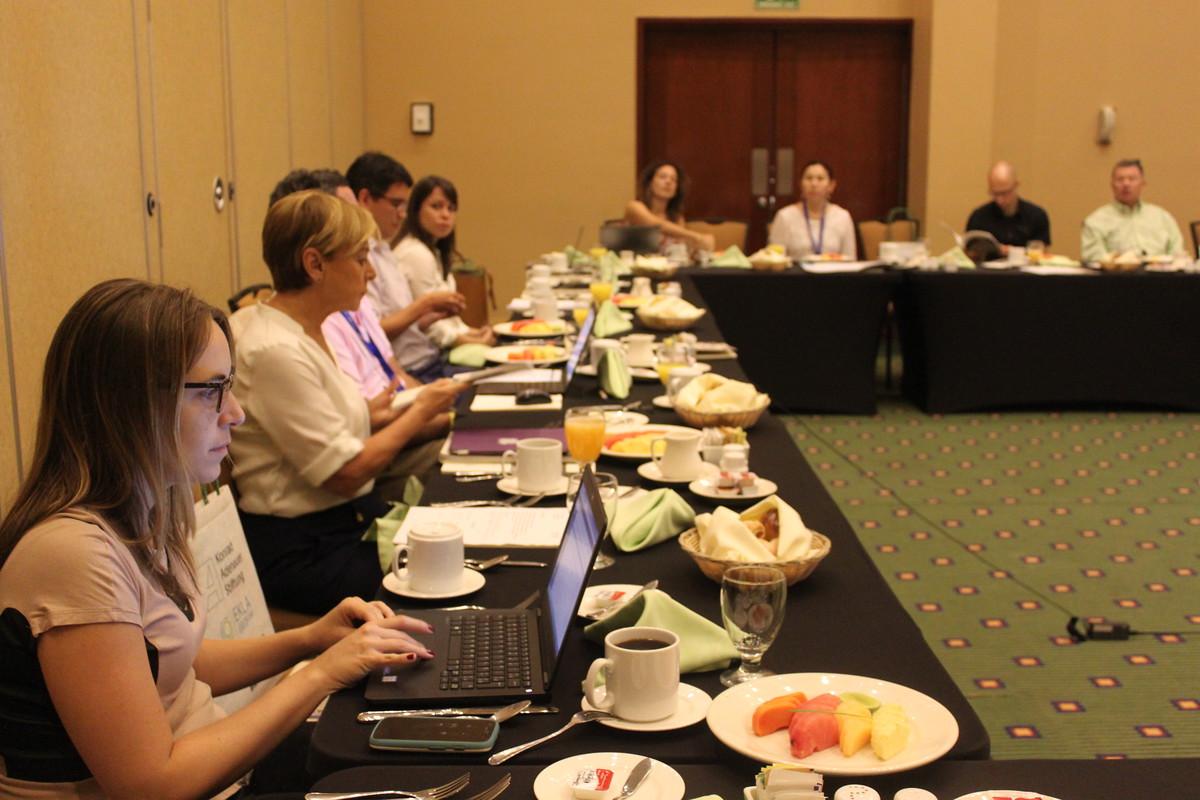Research presentation: analysis of biodiversity policies and strategies in amazon countries - Regional Programme Energy Security and Climate Change in Latin America
Event Reports
The event was opened by Manuel Ruiz, Director of International Matters and Biodiversity of SPDA (Peruvian Society of Environmental Law), who invited all the attendants for a small round of presentations. International experts from Germany, Brazil, Colombia, Peru, Puerto Rico and other countries attended this event, together with the specialists who participated in the research.
The event was carried out with presentations and discussion, to be a platform and start point to analyze the results and conclusions of the study to be spread during COP 13 on Biological Diversity.
The rationale behind selecting Bolivia, Brazil, Colombia and Peru is that these Andean-amazon territories (or Amazon in the case of Brazil) represent about 87% of coverage of the big Amazon ecosystem, hosting important biodiversity hotspots.
"What would have happened if we did not have these instruments?” this is the study approach, that besides presenting all the national instruments in Biodiversity, critically analyzes its impacts. In the Peruvian case, Mr. Ruiz noted the year 1992 as the framework from which Biodiversity was considered as a part of the Global policy, and in Latin America, as a coincidence, the 90s were noted as important for the democratization process. The participation of the civil society through NGOs and the calls to action also allowed the evolution of environmental matters, with the approval of a set of standards, such as the Biodiversity and Biosecurity Law, in a short, but intense, period of time. The 90s were also valuable for the creation of institutions, such as the National Commission in Biological Biodiversity (Peru), a formal agreement of consultation and commitments, with multi-sectorial participation.
Nowadays, there is a solid private preservation trend in Peru (Private Conservation Areas) that lead to expand the protected areas coverage, many of them with touristic purpose and of sustainable development; however, the pressures on Biodiversity are still under development.
Paula Lavratti, Director of the Communications Department of the Law Institute for a Green Planet in Brazil highlighted the international cooperation role as the key element to develop and maintain the protected areas in Latin America, specially in Brazil that has continental geographical dimensions. Also, in climate change matters, international cooperation, mainly with Germany, completes the national initiatives. She noted that, even though Brazil has already developed its plans and programs, the need to comply with international commitments, specially with CDB, has fostered the country to develop its Biodiversity policies. An example of this is that, in spite of having 2015 as deadline, Brazil has recently published its Biodiversity plan in 2016.
Likewise, the specialist asserted the challenge of finding information on progress of the Brazilian policy in Biodiversity, due to the political crisis that the country currently faces, which resulted in a series of turnover at ministries and secretariats. This is the reason why it is paramount to have the Biodiversity agenda as an Estate matter, and not governmental, to ensure the sustainability of the policies. Other challenges include the lack of synergy among ministries, in order to have Biodiversity as a cross-cutting topic, as well as the climate change. It is thus important the presence of indicators to assess the meeting of goals and what has been developed since 2012. Budgetary issues are also a challenge, because only near 2.5% of the national budget is allocated to the Ministry for the Environment. Finally, the protected areas that already exist in writing (Areas of paper) still need to be implemented on the field, what happens in a non-satisfactory rhythm. “If we continue at this pace, 102 years will be needed to regulate the entire protected areas system”, stated Ms. Lavratti.
Elsa Escobar, Executive Director of Natura Foundation of Colombia presented a historic insight of Biodiversity in her country. She explained the relation between legislative and institutional progress and governments. Unfortunately, theory does not always is practiced, and issues such as drug-dealing, security and corruption occupy an important place in the agenda. Among the causes for Biodiversity loss, legal and illegal mining standout, and not only in Colombia but in the entire region. This is the reason to create a regional observatory to prevent this loss and to raise awareness on the policy-makers.
Mr. Ruis presented the conclusions of the study, highlighting that all countries strongly defend the implementation processes and the increase of protected areas. A question that arises for all the countries in the study is how can we create effective instruments and how to measure them? also, the institutional coordination and the integration of management instruments in public policy of development in general, arise as a trend that needs to be highlighted.
During the discussion, as a self-criticism of the attendants to the workshop, it was mentioned that the governmental sectors and the private sector consider the environmentalists as constant hinders to the development, due to a vision that sometimes is very restricted. To overcome this challenge, it is necessary to share experiences with all the stakeholders, as is already successfully happening while supporting the creation of conservation methodologies. For example, in order to reach an agreement where the Biodiversity is integrated with productive sectors the sustainable use of forests should be achieved; in other words, a sustainable use of shared resources and benefits, as mentioned on the Nagoya Protocol.
During the second part of the workshop, María Gabriela García, Project Manager of FAB LAB-Peru presented her institution and research Innovation and Amazon - FAB LAB Floating Project in the Amazon: Pilot Stage. The Floating Fab Lab was acknowledged by the United Nations as one of the most important projects to achieve the Sustainable Development Objectives that was subscribed by the UN in New York in 2015. The study considers that the Amazon is a space of opportunities, mainly because its nature and cultural richness that is acknowledged worldwide. These two elements may be the key to a new episode in the development of the Peruvian Amazon, that will also allow the economy, basically extractive, to leap forward to a sustainable economy based in knowledge. The technological element within this process becomes an important catalyzer that will help the creation of conditions for this change.
During the closure of the event, the importance of discussing topics of regional interest was noted, with the contribution of each of the countries that participate in the study, in order to exchange ideas and add efforts in topics that cannot be limited to the borders of each country, but that should be worked jointly to meet common goals.
More images on our Facebook







